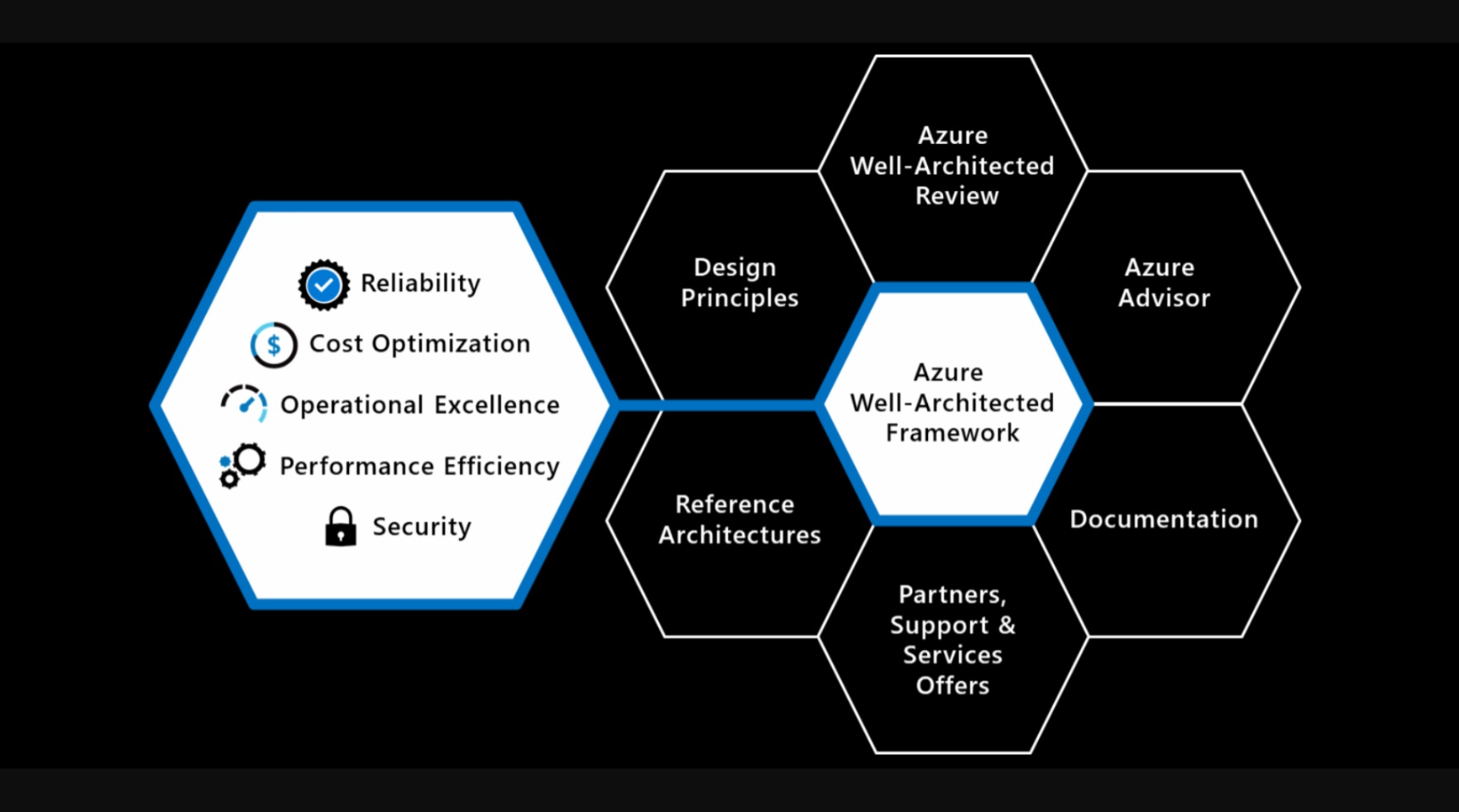This module is designed to provide a high-level overview of the Microsoft Cloud Adoption Framework for Azure. It will cover the basics of the Cloud Adoption Framework and the five disciplines of the Well Architected Framework. Requirements for this module are documented here.
The Microsoft Cloud Adoption Framework for Azure is a full lifecycle framework that enables cloud architects, IT professionals, and business decision makers to achieve their cloud adoption goals. It provides best practices, documentation, and tools that help you create and implement business and technology strategies for the cloud.
Following best practices for the Cloud Adoption Framework allows your organization to better align business and technical strategies and ensure success. Watch this video to learn more.
The Cloud Adoption Framework brings together cloud adoption best practices from Microsoft employees, partners, and customers. The framework provides tools, guidance, and narratives. The tools it includes help you shape your technology, business, and people strategies to achieve the best business outcomes possible through your cloud adoption effort. Use the following table to review the guidance for each methodology.
Strategy: Define business justification and expected adoption outcomes. |
Plan: Align actionable adoption plans to business outcomes. |
||
Ready: Prepare your cloud environment for planned changes. |
Migrate: Migrate and modernize existing workloads. |
||
Innovate: Develop new cloud-native or hybrid solutions. |
Secure: Improve security over time. |
||
Manage: Manage operations for cloud and hybrid solutions. |
Govern: Govern your environment and workloads. |
||
Organize: Align the teams and roles supporting your organization's cloud adoption efforts. |
Each methodology listed above is part of a broad cloud adoption lifecycle. The Cloud Adoption Framework supports you throughout each phase of your cloud adoption journey. The following diagram outlines how the framework uses methodologies as approaches to overcoming common blockers.
Cloud-based infrastructure fundamentally changes how your organization finds, uses, and secures technology resources. Traditionally, organizations assumed ownership of and responsibility for all aspects of their technology, from infrastructure to software. Moving to the cloud instead allows your organization to provision and consume resources only when needed. Although the cloud offers tremendous design choice flexibility, your organization needs a proven and consistent methodology for adopting cloud technologies to ensure success. The Microsoft Cloud Adoption Framework for Azure meets that need, helping guide your decisions throughout your cloud adoption journey.
Cloud adoption is a means to an end. Successful cloud adoption begins well before any cloud platform vendor is selected. It begins when business and IT decision makers realize that the cloud can accelerate a specific business transformation goal. The Cloud Adoption Framework helps decision makers align strategies for business, culture, and technical change to achieve desired business outcomes.
The Cloud Adoption Framework provides technical guidance for Microsoft Azure. Enterprise customers might still be trying to select a cloud vendor, or might have an intentional multicloud strategy. For these situations, the framework provides cloud-agnostic guidance for strategic decisions whenever possible.
This guidance affects the business, technology, and culture of organizations. Affected roles include:
- Line-of-business leaders
- Business decision makers
- IT decision makers
- Finance
- Enterprise administrators
- IT operations
- IT security and compliance
- IT governance
- Workload development owners
- Workload operations owners
- Business subject matter experts
Each role uses unique vocabulary, and each has different goals and key performance indicators. A single set of content can never address all audiences effectively.
Enter the cloud architect. A cloud architect serves as a thought leader and facilitator, bringing these audiences together. This collection of guides is designed to drive decision-making and help cloud architects have the right conversations with the right audiences. Business transformation empowered by the cloud relies on the cloud architect role to help guide decisions throughout the organization and IT.
Each section of the Cloud Adoption Framework represents a different facet of the cloud architect role. These sections also create opportunities to share cloud architecture responsibilities across a team of cloud architects. For example, the governance section is designed for cloud architects who have a passion for mitigating technical risks. Some cloud providers refer to these specialists as cloud custodians. We prefer the term cloud guardian, or collectively, a cloud governance team.
If your organization is new to Azure, begin by ensuring you understand and document foundational alignment decisions. When your enterprise's digital transformation involves the cloud, having an understanding of these fundamental concepts helps you during the cloud adoption process.
The Azure Well-Architected Framework is a set of guiding tenets to improve the quality of a workload. It consists of five pillars of architectural excellence:
- Reliability: The ability of the system to recover from failures and continue to function. Availability is whether users can access the workload when they need to.
- Security: The protection of the application and its data from various threats. Security should be considered throughout the entire lifecycle of the application.
- Cost optimization: The generation of incremental value early while avoiding capital-intensive solutions. Cost optimization involves applying the principles of Build-Measure-Learn to accelerate time to market.
- Operational excellence: The operations and processes that keep an application running in production. Operational excellence includes reliable and predictable deployments, automation, and fast rollbacks or roll forwards.
- Performance efficiency: The ability of the workload to scale to meet the demands placed on it by users in an efficient manner. Performance efficiency involves using scaling appropriately and implementing PaaS offerings that have scaling built in.

